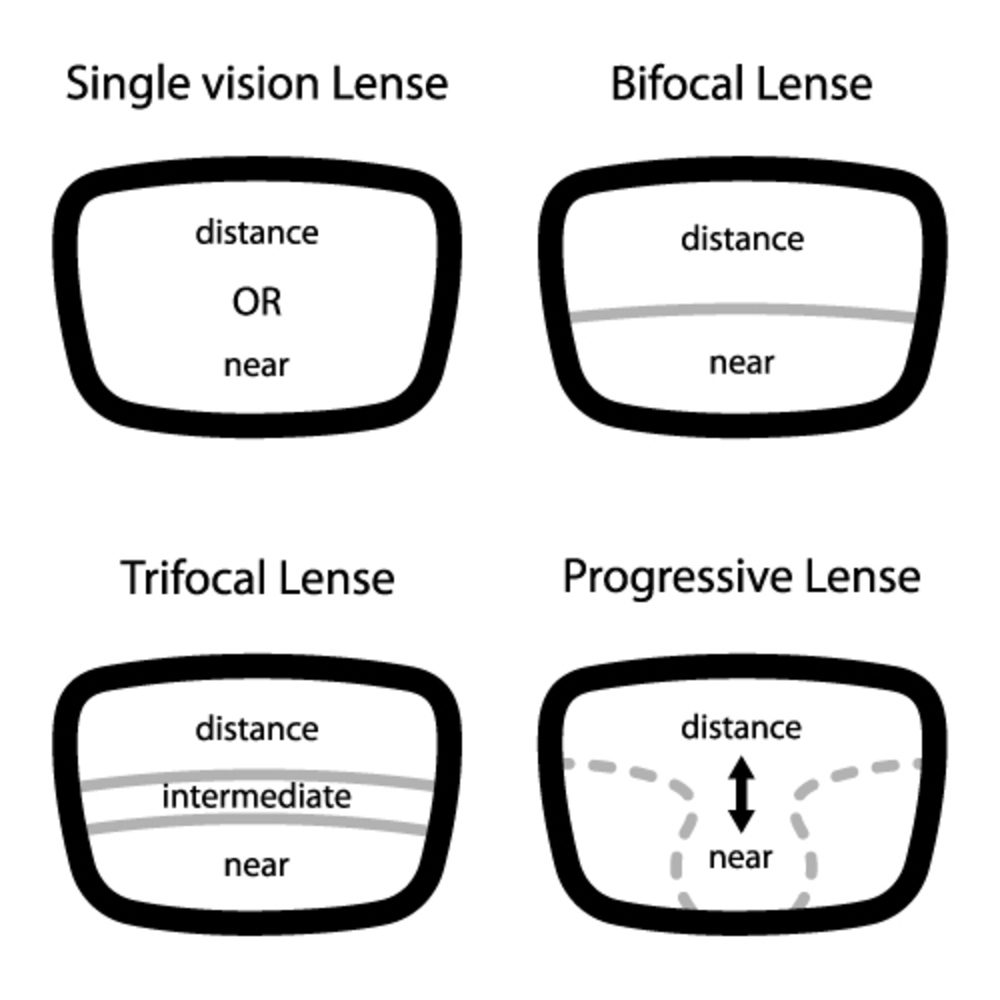
When you go to the optometrist, you need to make a number of decisions. You might have to choose between contact lenses and eyeglasses, for example, and decide on eyeglasses frames. You may also have to decide between single vision, bifocal and trifocal lenses.
If you are like many people, though, you may not know the difference between these lenses. Furthermore, you may not know if you really need bifocal or trifocal lenses, or if single vision (or monofocal) lenses are enough to provide clear vision. Fortunately, your optometrist can help you determine which lenses are right for you.
Many vision problems are the result of poor focus. Light enters your eyes through lenses that bend, or refract, the light so that it strikes a precise location on the light sensitive retina at the back of your eye. For clear vision, the light must refract correctly and focus directly on the retina rather than in front of the light sensitive tissue or behind it.
If your eye is slightly misshapen, the lens will bend the light incorrectly. Eye doctors refer to this as a refractive error. Incorrect bending of the light causes it to focus on the wrong spot, either in front of the retina or behind it. Focusing in the wrong spot will cause blurry vision. This refraction is corrected with prescription eyeglasses.
The main types of refractive errors are nearsightedness, farsightedness and age- related loss of near vision. Nearsightedness, or myopia, means you cannot see faraway objects clearly but can see things clearly up close. It occurs when your eyeball is too long, which causes the light to focus before it reaches your retina.
Farsightedness, also known as hyperopia, means faraway objects are clear but nearby items are fuzzy. It occurs when your eyeball is too short, which means the lens of your eye focuses the light too far past the retina.
Presbyopia is a vision problem in which you gradually begin having problems seeing things up close. Presbyopia typically affects people over the age of 40. In fact, “presbyopia” is a Greek word that means “old eye.” Unlike nearsightedness and farsightedness that occur because your eye is misshapen, presbyopia occurs when the lens in your eye become less flexible, so it does not proper focus the light.
Depending on your vision problem, your eye doctor may prescribe single vision, bifocal, or trifocal lenses for you.
The suffix “–focal” means “vision,” so monofocal means, “single vision.” Monofocal lenses have the same prescription throughout. Eyeglasses with single vision lenses may be right for you if you are nearsighted or farsighted. The single focus of the single vision lens sharpens your view of either nearby objects or faraway items, but not both. Reading glasses are a type of single vision lens that might be right for you if you are farsighted.
Bifocal lenses, in comparison, sharpen your vision for both nearby and faraway objects. Bifocal lenses may be right for you if you have mild to moderate presbyopia. The lens power of the upper part of a bifocal lens focuses on faraway objects while the bottom part of the lens focuses on close-up objects.
A trifocal lens has three lens powers that help your eyes focus on objects that are far away, close to your eyes, and at about arm’s length. Trifocal lenses are right for you if you have severe presbyopia that has affected your intermediate vision.
The best way to determine which eyeglasses lens is right for you is to consult with your optometrist. He or she can perform a thorough evaluation of your eye health and vision needs, and recommend the best eyeglasses for clear vision up close, faraway, and everywhere in between.